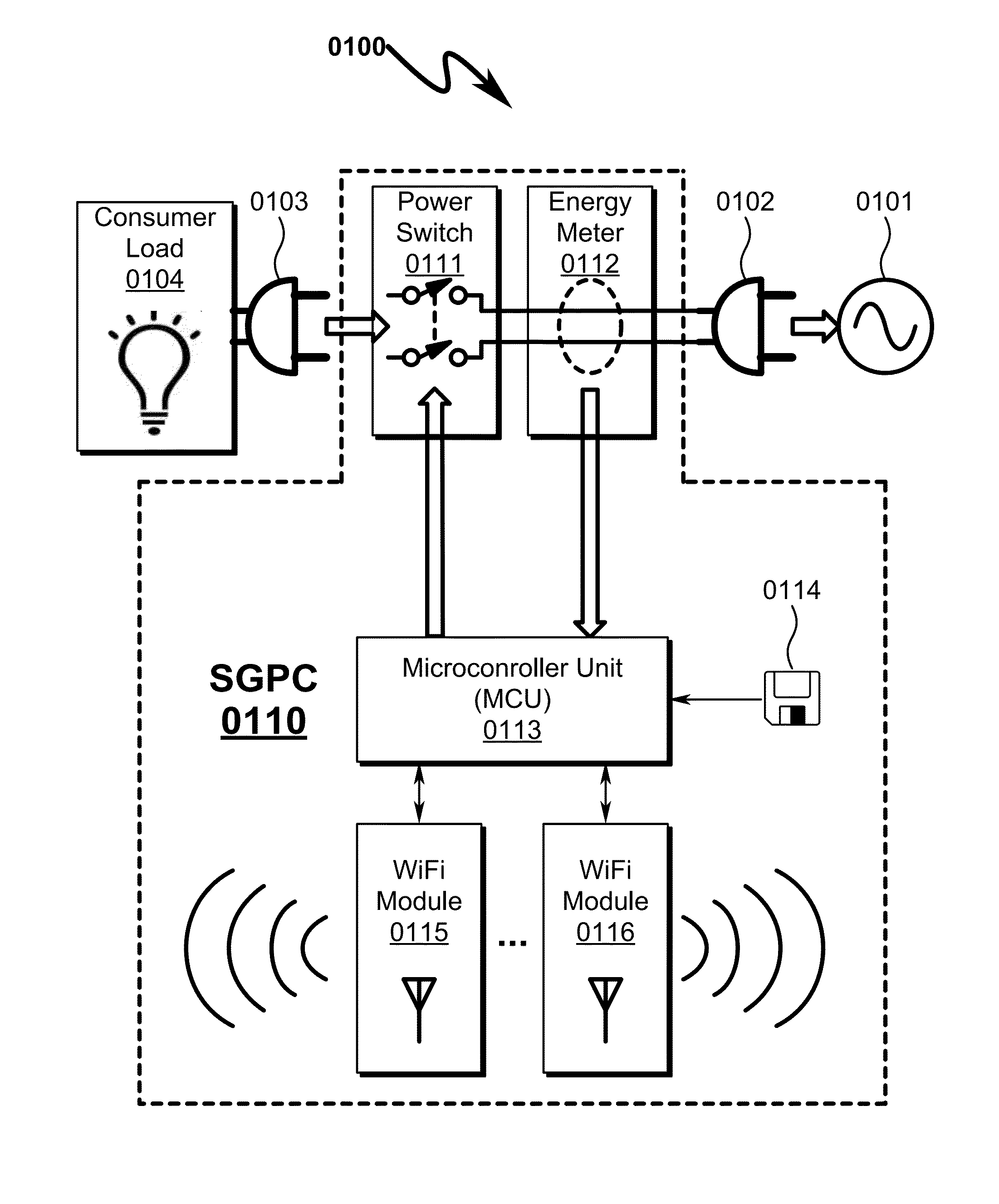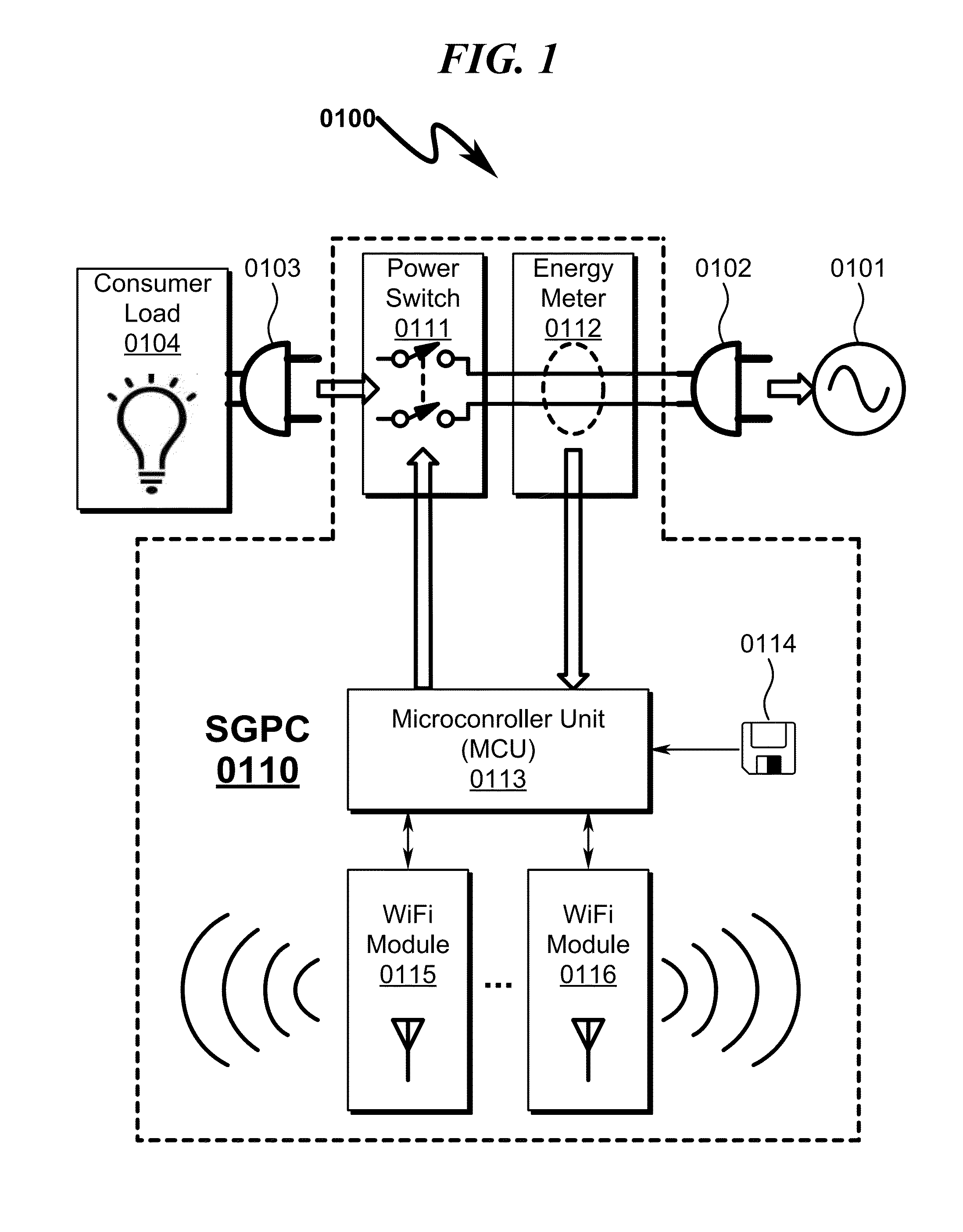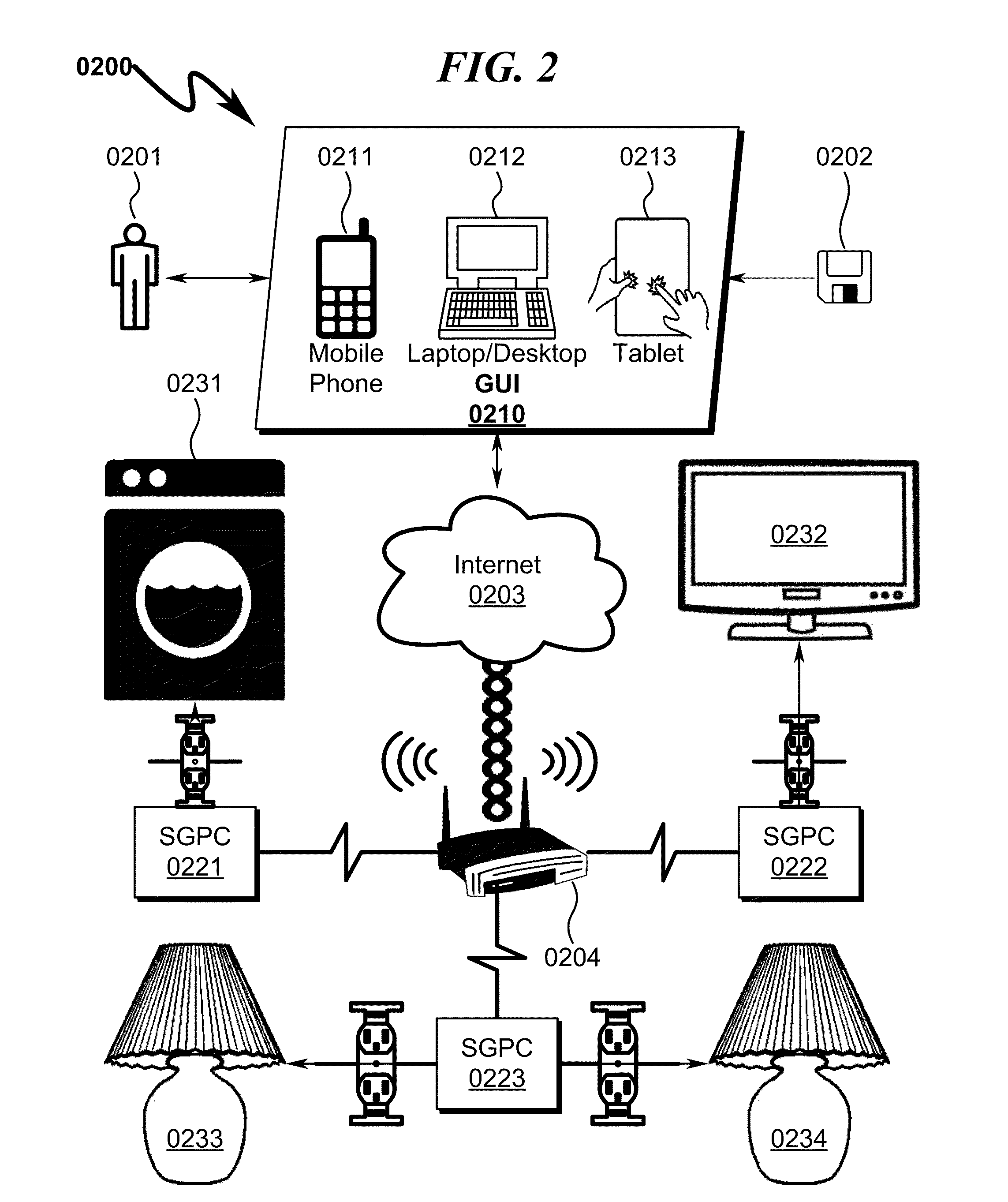Power distribution system and method
a power distribution system and power distribution technology, applied in the field of power distribution system and method, can solve the problems of consumers not being able to control their devices from anywhere, consumers not being able to easily access devices at home and away from home, and existing internet based home automation devices suffering
- Summary
- Abstract
- Description
- Claims
- Application Information
AI Technical Summary
Benefits of technology
Problems solved by technology
Method used
Image
Examples
embodiment
Preferred Embodiment Method Summary
[0561]The present invention preferred exemplary method embodiment anticipates a wide variety of variations in the basic theme of implementation, but can be generalized as a power distribution method, the method operating in conjunction with a SGPC power distribution system comprising:
[0562](a) power load receptacle;
[0563](b) power switch;
[0564](c) power monitor;
[0565](d) computing device; and
[0566](e) wireless communication interface;
[0567]wherein[0568]the SGPC is configured to be enclosed within a rectangular cuboid enclosure;[0569]the power switch comprises a primary and secondary contactor, the primary and secondary contactor electrically connected in response to a control input;[0570]the primary contactor of the power switch is electrically connected to a power source;[0571]the power load receptacle is electrically connected to the secondary contactor of the power switch;[0572]the power monitor produces a power value output in response to the e...
PUM
 Login to View More
Login to View More Abstract
Description
Claims
Application Information
 Login to View More
Login to View More - R&D
- Intellectual Property
- Life Sciences
- Materials
- Tech Scout
- Unparalleled Data Quality
- Higher Quality Content
- 60% Fewer Hallucinations
Browse by: Latest US Patents, China's latest patents, Technical Efficacy Thesaurus, Application Domain, Technology Topic, Popular Technical Reports.
© 2025 PatSnap. All rights reserved.Legal|Privacy policy|Modern Slavery Act Transparency Statement|Sitemap|About US| Contact US: help@patsnap.com



